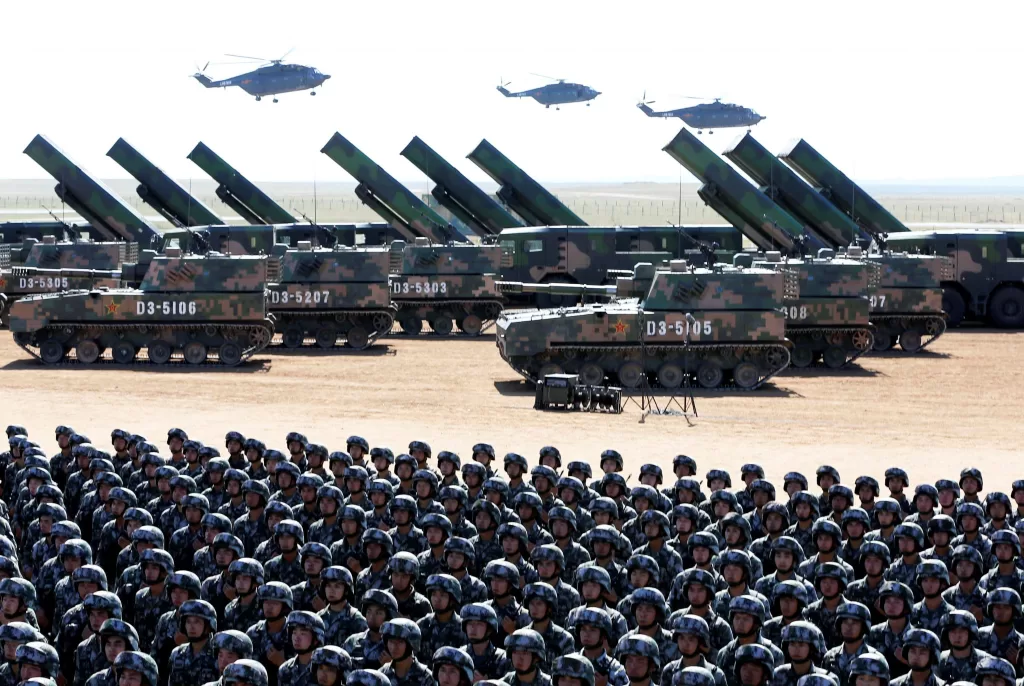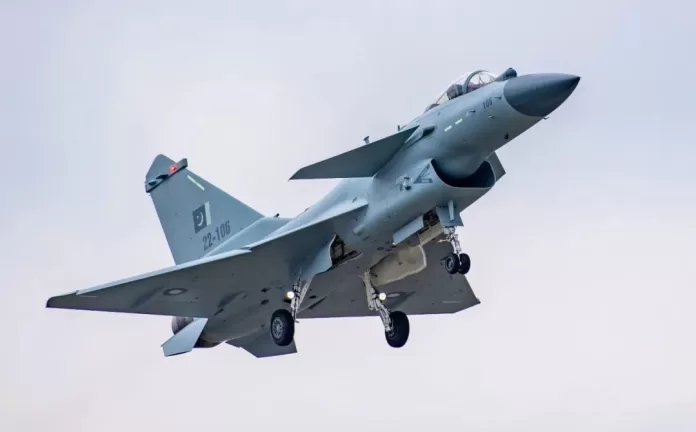China’s increasing involvement in Pakistan’s military development raises concerns in the complex realm of South Asian geopolitics. This partnership, deeply rooted in history and geography, is evolving as China extends its reach through initiatives like the Belt and Road Initiative (BRI).
China’s alignment with Pakistan’s military modernization reshapes regional dynamics and draws global attention.
China seeks a counterpoint to India’s influence in the region, bolstering Pakistan’s military to secure its strategic interests in the Indian Ocean and BRI ambitions. This move challenges the US-led order perceived as constraining China. Conversely, the US, aligning with India, further complicates the strategic calculus.
Understanding China’s involvement with Pakistan goes beyond India. It’s a multi-layered power game with global implications. As China expands its economic and military clout, its alignment with Pakistan reflects ambitions for global leadership. The complexities of the ‘Indian factor’ play a central role in shaping the ever-evolving strategic landscape of South Asia.

China’s Footprint in Pakistan’s Military Arsenal is very pivotal. China has emerged as Pakistan’s primary source of advanced weaponry, supplying J-10C “Vigorous Dragon” as of February 2024, China has delivered 20 J-10C fighter jets to Pakistan, with an additional 16 on order. While in Unconfirmed Deliveries of JF-17 “Thunder” are not solely a Chinese product, the JF-17 is a joint venture between China and Pakistan. Estimates suggest Pakistan currently possesses around 150 JF-17s, with ongoing production aiming to reach 300.
China has not yet supplied any submarines to Pakistan. However, a significant agreement for future deliveries exists as of Agreement in 2016, China agreed to supply Pakistan with Eight New Type 039A Yuan-class diesel-electric attack submarines by 2028. Under this agreement Four submarines will be constructed in China, while the remaining four will be built in Pakistan’s Karachi Shipyard & Engineering Works (KSEW).
The project is reportedly ongoing, with the first submarine expected to be delivered by 2024.
China has delivered around 400 VT-4 main battle tanks to Pakistan and in the 1990s, China reportedly supplied Pakistan with M-11 short-range ballistic missiles. These deliveries faced international criticism and sanctions against China.
China’s assistance has arguably contributed to Pakistan’s development of indigenous capabilities in missile production. This raises concerns about potential advancements in Pakistan’s missile programs, including the development of more sophisticated variants.
The US has said it will be imposing sanctions on three China-based companies that have reportedly worked to supply missile-applicable items to Pakistan’s ballistic missile program. The US State Department identified the companies as General Technology Limited, Beijing Luo Luo Technology Development, and Changzhou Utek Composite Company.
This extensive support has not only bolstered Pakistan’s defensive capabilities but also signaled a significant shift in regional arms dynamics. Joint military exercises like Series of “Shaheen” and “Sea Guardians” exercises and training programs further solidify this growing military alignment.
The implications of arms deal and China’s involvement extend beyond mere hardware. Technology transfers have enabled Pakistan to develop its indigenous defence industry, potentially altering the regional arms race landscape. This newfound self-reliance, however, comes at a cost. Pakistan’s growing dependence on China raises concerns about potential compromises on strategic autonomy and vulnerability to external pressure.
Some concerns exist, also in Pakistan, that its growing reliance on Chinese loans for military equipment and infrastructure projects could create a “debt-trap” scenario. This could limit their ability to maneuver freely in foreign policy and potentially compromise their sovereignty.
While technology transfer agreements aim to bolster Pakistan’s military capabilities, they may raise concerns about intellectual property rights and potential vulnerabilities in sensitive areas.

Excessive reliance on Chinese military technology and expertise could lead to dependence on China for decision-making and maintenance, potentially impacting Pakistan’s strategic autonomy.
The strategic calculus and shifting sands in South Asia is undoubtedly impacted by China’s deepening ties with Pakistan. India, Pakistan’s long-standing rival, views this development with apprehension, perceiving it as a threat to regional stability and the delicate balance of power.
The United States, traditionally a significant security partner for Pakistan, also faces a complex situation, navigating its alliance with India while seeking to counter China’s growing influence.
This looks like a double-edged sword while China’s support undeniably strengthens Pakistan’s military posture, it also carries inherent risks.
Excessive dependence on a single supplier can limit strategic options and potentially exacerbate existing regional tensions. Moreover, concerns regarding transparency and potential for misuse of advanced weaponry cannot be ignored.
Looking ahead in the unfolding narrative of the future trajectory of China-Pakistan military cooperation, it still remains to be seen. Public opposition to growing Chinese influence in Pakistan, particularly regarding military cooperation, could create internal political instability. The alliance faces scrutiny from other countries, particularly the US, due to concerns about China’s growing military footprint and potential destabilization of the region. China’s human rights record raises concern about the ethical implications of military cooperation with Pakistan.

Potential areas of further collaboration, such as joint research and development in advanced military technologies, could significantly alter the regional security landscape. To mitigate these challenges, both China and Pakistan need to promote transparency, respect sovereignty, engage in regional dialogue and uphold human rights. Navigating these developments requires careful consideration of the long-term implications for regional stability and fostering dialogue among all stakeholders.
As the complicated power dynamics in South Asian geopolitics play out, the “Dragon’s Embrace” portrays a rich and multifaceted scene on the stage.
Undoubtedly, China’s influence has profoundly reshaped Pakistan’s military landscape, bolstering its defence capabilities but concurrently raising a chorus of concerns about regional stability, strategic autonomy, and potential debt traps.
While opportunities for dialogue and collaboration exist, navigating this multifaceted terrain requires careful consideration of all stakeholders’ interests and long-term implications.
Only through fostering transparency, embracing responsible partnerships, and prioritizing regional security can the true impact of this evolving alignment be understood and its consequences mitigated.
The journey ahead is fraught with challenges, but by engaging in informed and constructive dialogue, we can strive to ensure that the dragon’s embrace fosters not just military might, but also a future of peace and stability for South Asia and beyond.





